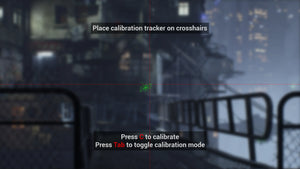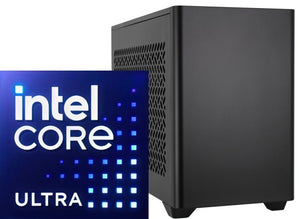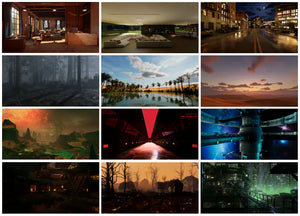Spatial Computing: The Technological Revolution

Spatial computing is no longer futuristic—it’s here, reshaping how we interact with technology in our everyday lives. From film production and immersive training to retail installations and hybrid events, spatial computing enables us to merge digital and physical worlds seamlessly.
At ARwall, we provide award-winning XR softwares, hardwares, and services that empower studios, brands, and enterprises to embrace this transformation. With our ARFX Infinite Studio, ARFX Scenepacks, ARFX Studiobox and ARFX Pro Server System , we help businesses harness the power of spatial computing platforms to create meaningful, interactive, and immersive experiences.
What Is Spatial Computing?
Spatial computing is the process of using digital technologies to map, track, and interact with the physical environment in real time. Unlike traditional computing which happens on flat screens—spatial computing enables users to interact with 3D digital content in physical spaces.
Spatial computing means computers understand and respond to the space around us. It includes AR (augmented reality), VR (virtual reality), MR (mixed reality), and XR (extended reality) platforms that let us engage in natural, intuitive ways.
Spatial Computing Meaning in Today’s World
-
Gesture-controlled interactions instead of keyboards and mice.
-
3D holographic objects that can be manipulated in real time.
-
Immersive environments where physical and digital overlap seamlessly.
ARwall delivers these through ARFX Infinite Studio, ARFX Pro Plugin, enabling creative industries and enterprises to embrace spatial computing with ease.
The Spatial Computing Market & Trends 2025
The spatial computing market is projected to grow exponentially as more industries adopt XR workflows, training, and hybrid solutions. According to analysts, the market will reach hundreds of billions of dollars by 2025, fueled by:
-
Apple’s entry into spatial computing with the Apple Vision Pro, raising consumer awareness and adoption.
-
Hybrid work transformation, where spatial computing allows employees to collaborate in 3D environments remotely.
-
Immersive media production, as seen in Hollywood studios and live event productions powered by XR LED stages.
-
Retail and experiential marketing, where brands use spatial computing devices and AR kiosks for interactive shopping experiences.
Spatial Computing Trends 2025
-
Spatial computing glasses & headsets becoming mainstream (e.g., Apple Vision Pro, Varjo Aero).
-
Spatial computing platforms moving beyond entertainment into education, healthcare, and retail.
-
Virtual production adoption for films, reducing costs while increasing creativity.
-
Gesture and gaze interaction replacing traditional controllers.
ARwall is already implementing these trends with real-time XR stages, AR3D systems, and ARFX tools—helping brands future-proof their strategies today.
Spatial Computing Technology & Landscape
Spatial computing technology is built on three layers: hardware devices, software platforms, and interaction methods.
Core Spatial Computing Technologies
-
Spatial mapping: LIDAR, depth sensors, and cameras detect the physical world.
-
XR rendering: Real-time engines like Unreal Engine power realistic virtual environments.
-
Gesture & gaze tracking: Hands, eyes, and voice become natural input methods.
-
Immersive displays: AR glasses, VR headsets, LED XR walls bring experiences to life.
ARwall’s Role in the Technology Landscape
ARwall has developed award-winning XR software and hardware that sits at the center of the spatial computing ecosystem:
-
ARFX Infinite Studio – A complete XR platform for virtual production.
-
ARFX Scenepacks – Ready-to-use 3D environments for rapid deployment.
-
ARFX Pro Plugin – Seamlessly integrates Unreal Engine with LED XR stages.
-
AR3D Gesture System – Touchless control through motion and voice input, perfect for kiosks and retail spaces.
-
LED XR Stages – High-end immersive installations for film, TV, and live events.
This suite allows ARwall clients to embrace spatial computing interaction changes—from how crews design sets to how audiences engage with content.

Spatial Computing Applications & Examples
Spatial computing applications span industries, changing how humans interact with data, environments, and each other.
Film & Virtual Production
ARwall’s virtual production company services use LED XR stages and ARFX tools to create realistic, immersive sets. Directors and producers can visualize entire worlds in real time—no green screens required.
Example: ARwall powered virtual production environments for Hollywood studios, Netflix shows, and live broadcast events.
Retail & Experiential Installations
AR3D-powered kiosks provide touchless, gesture-driven experiences that draw in customers and increase brand engagement.
Example: M&M’s World interactive AR kiosk delivered engaging, hygienic, and futuristic brand experiences.
Hybrid & Virtual Events
Spatial computing enables immersive remote collaboration. With ARwall’s event production tools, hybrid conferences or product launches become more interactive and engaging.
Spatial Computing Glasses & Devices
Devices like the Apple Vision Pro and Varjo Aero are transforming how users access XR. While ARwall doesn’t manufacture headsets, our platforms support and integrate seamlessly with these devices, enhancing storytelling and interactivity.
How Hybrid & Spatial Computing Change Interaction
Traditional interaction with technology relied on screens, keyboards, and controllers. Spatial computing introduces a paradigm shift:
-
3D object manipulation instead of clicking icons.
-
Walking through virtual environments rather than scrolling.
-
Body, gaze, and hand tracking replace button presses.
-
Immersive storytelling replaces 2D video screens.
Hybrid computing, combined with spatial computing, allows teams to collaborate across physical and digital environments. Imagine walking around a life-size prototype in XR, while remote teammates see the same model through headsets or LED screens.
ARwall enables this with hybrid XR solutions, helping brands and enterprises deliver shared immersive experiences whether on-site or remote.
Spatial Computing Companies & Platforms
The spatial computing industry is expanding rapidly, and several companies are leading the way with hardware, platforms, and immersive services.
ARwall – Pioneering XR Platforms
ARwall stands out among spatial computing companies for its all-in-one XR ecosystem. Unlike others who focus only on headsets or apps, ARwall delivers software (ARFX), hardware (LED XR stages), and services (virtual production, hybrid event production).
With ARwall, you’re not just adopting a device—you’re embracing a full-service spatial computing platform tailored for professional-grade XR projects.
Other Key Players in the Spatial Computing Landscape
-
Apple Spatial Computing (Vision Pro): Apple has introduced consumer-friendly spatial computing glasses, pushing awareness and driving adoption worldwide.
-
Varjo: A leader in high-resolution VR headsets for enterprise use.
-
EON Reality: Specializes in spatial learning and enterprise XR platforms.
-
Microsoft & Meta: Known for XR platforms like HoloLens (MR) and Meta Quest (VR).
ARwall often integrates with these technologies, extending their capabilities through our proprietary ARFX software and production services.
Why Choose ARwall for Spatial Computing Services?
When it comes to spatial computing technology, not all providers offer a full-service solution. ARwall provides an end-to-end platform that combines cutting-edge tools, professional expertise, and customized deployment.
The ARwall Advantage
-
Proven XR Software – ARFX Infinite Studio, Pro Plugin, and Scenepacks streamline production workflows.
-
Immersive Hardware Solutions – LED XR stages and AR3D gesture systems deliver powerful interaction methods.
-
Full-Service Capabilities – From creative concept to on-site stage management, ARwall handles everything.
-
Cross-Industry Experience – Film, TV, gaming, live events, retail, and corporate clients.
-
Trusted by Global Brands – Collaborations with Sony, HBO, Netflix, M&M’s World, and NBC highlight ARwall’s credibility.
Whether you need spatial computing devices for hybrid collaboration or a complete XR stage for production, ARwall has you covered.
Conclusion – Transform Your World with Spatial Computing
Spatial computing is revolutionizing the way humans and technology interact. From spatial computing glasses like Apple Vision Pro to XR platforms like ARwall’s ARFX, the industry is moving toward natural, immersive interaction.
With ARwall’s services, platforms, and devices, you can embrace this transformation—future-proofing your workflows while delivering unforgettable experiences.
Ready to explore what spatial computing can do for you?
Book a Call with ARwall or Request a Free Quote today to unlock immersive XR solutions tailored to your needs.

FAQ – Spatial Computing Explained
Q1: What is the spatial computing definition?
A: Spatial computing is the blending of physical and digital environments through XR technologies (AR, VR, MR). It allows humans to interact naturally with 3D digital content in real-world spaces.
Q2: What is the meaning of spatial computing in everyday use?
A: It means computers understand and respond to the space around us—via gesture, gaze, and voice tracking. Applications include AR glasses, virtual production, and hybrid meetings.
Q3: What are examples of spatial computing applications?
A: Examples include:
-
Film production using ARwall’s LED XR stages.
-
Retail kiosks with touchless AR3D systems.
-
Hybrid events powered by XR environments.
-
Training simulations in VR/XR platforms.
Q4: How are hybrid and spatial computing changing the way we interact with technology?
A: They allow immersive collaboration beyond screens, letting teams design, interact, and learn together in real or virtual spaces. With ARwall, clients get both hybrid event production and spatial XR interaction in one package.
Q5: What devices or platforms are used in spatial computing?
A: Popular devices include Apple Vision Pro, Varjo Aero, and Meta Quest headsets. ARwall’s software and services integrate with these to deliver scalable, professional XR solutions.
Q6: Can I invest in spatial computing stocks?
A: Yes. Major companies like Apple, Meta, and Microsoft offer investment opportunities. While ARwall is not publicly traded, partnering with ARwall ensures you directly benefit from the ROI of spatial computing projects.





